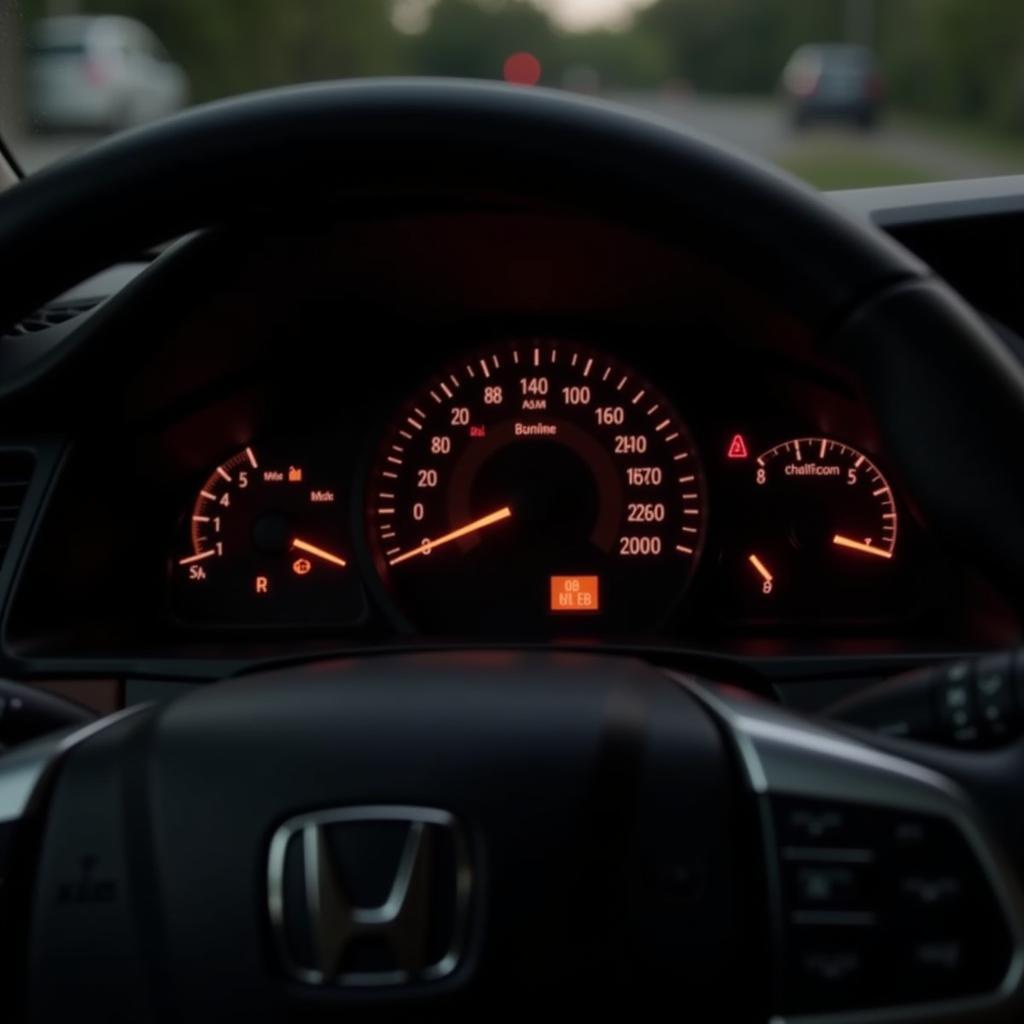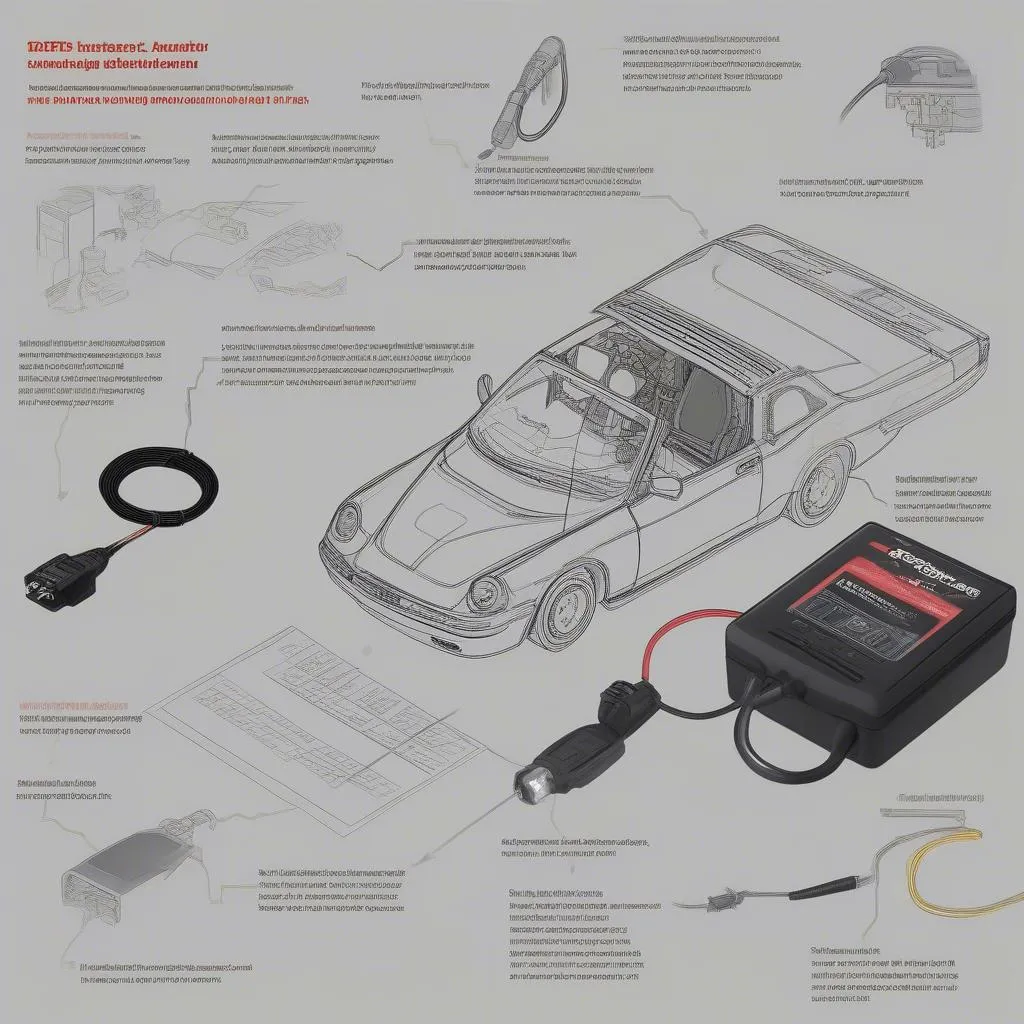If you’re a Hyundai owner, you’ve probably experienced the minor panic attack that comes with an unexpected dashboard warning light. One of the most common culprits is the persistent seat belt warning light, even when you’re sure you’ve buckled up. Don’t worry, you’re not alone. This issue is more common than you might think and can stem from several reasons, ranging from a simple sensor malfunction to a more complex wiring issue. This comprehensive guide is designed to help you understand why your Hyundai’s seat belt warning light is acting up and, more importantly, how to fix it.
Understanding Your Hyundai’s Seat Belt Warning System
Before we dive into troubleshooting, it’s important to understand how your car “knows” whether you’ve buckled up. Modern Hyundai vehicles use a Seat Belt Reminder System (SBRS) consisting of two main components:
- Seat Belt Buckle Switch: Located within the buckle assembly, this switch detects when the buckle is fastened. When you click your seat belt in, the switch closes an electrical circuit, signaling to the car’s computer that the belt is engaged.
- Seat Belt Warning Light: This light, typically displaying a red seat belt icon, is located on the instrument panel. It illuminates to alert you if the seat belt for the driver or front passenger seat is unfastened while the car is running.
In simple terms, when you buckle up, the buckle switch tells the car’s computer “All good here!”, and the warning light stays off. If the computer doesn’t receive this signal, the warning light illuminates, accompanied by an annoying chime in most cases.
Common Causes of a Persistent Seat Belt Warning Light
Now that you know how the system works, let’s explore the common culprits behind a stubborn seat belt warning light:
-
Faulty Seat Belt Buckle Switch: The buckle switch is the most frequent offender. Over time, dirt, dust, or spilled liquids can interfere with the switch’s operation, preventing it from sending the correct signal to the car’s computer. In some cases, the switch itself might be worn out or damaged.
-
Wiring Issues: The wiring harness connecting the buckle switch to the car’s computer can become damaged or corroded, disrupting the flow of information. This can occur due to wear and tear, rodent damage, or exposure to moisture.
-
Faulty Occupant Detection System (ODS): Some Hyundai models are equipped with an Occupant Detection System (ODS), which uses sensors in the passenger seat to determine if a passenger is present and whether the airbag should deploy. If the ODS sensor malfunctions, it can trigger a false seat belt warning light.
-
Software Glitches: While less common, a glitch in the car’s software can sometimes cause the seat belt warning system to malfunction.
Troubleshooting the Warning Light: A Step-by-Step Guide
Before rushing to a mechanic, try these troubleshooting steps to identify and potentially fix the issue:
-
Check the Obvious: It might sound silly, but ensure your seat belt is indeed properly fastened. Sometimes the buckle might not be fully engaged, or the seat belt could be twisted.
-
Inspect the Buckle and Wiring: Examine the buckle assembly for any visible damage, debris, or corrosion. If possible, gently wiggle the wiring harness connected to the buckle while observing the warning light for any changes. This can help pinpoint a loose connection or damaged wire.
-
Check the Passenger Seat: If the warning light persists even when no one is in the passenger seat, try placing a weight on the seat (around 60-70 pounds) to see if it changes the warning light’s behavior. This can help determine if the ODS sensor is involved.
-
Reset the System: Disconnecting the car’s battery for a few minutes can sometimes reset the car’s computer and resolve software-related glitches. Remember to consult your owner’s manual for the correct battery disconnection procedure.
Seeking Professional Help: When and Why?
If your DIY troubleshooting doesn’t resolve the issue, it’s time to consult a qualified mechanic, especially one specializing in Hyundai vehicles. They have the expertise and tools to accurately diagnose and repair the problem.
Here’s why professional help is essential:
- Accurate Diagnosis: Mechanics use advanced diagnostic tools, including OBD-II scanners, to pinpoint the root cause of the warning light. This ensures that you’re not just addressing the symptom but fixing the underlying problem.
- Safe Repairs: Working with electrical systems in a car requires caution and expertise. Incorrect handling can damage sensitive components or even pose safety hazards. Qualified mechanics have the knowledge and experience to perform repairs safely and effectively.
- Software Updates: In some instances, the problem might stem from outdated software in the car’s computer. Mechanics have access to the latest software updates from Hyundai, which they can install to rectify any software-related malfunctions.
Preventing Future Issues: Maintenance Tips
While some causes of a persistent seat belt warning light are unavoidable, proactive maintenance can significantly reduce the likelihood of encountering this problem:
- Keep It Clean: Regularly clean the buckle assembly, removing any dirt, dust, or debris that could interfere with the buckle switch’s operation. A gentle vacuum cleaner attachment or a cotton swab slightly dampened with electronics cleaner can work wonders.
- Careful Entry and Exit: Avoid putting excessive stress on the seat belt buckle when entering or exiting the vehicle. Rough handling can damage the buckle switch or wiring over time.
- Regular Inspections: During routine maintenance, request that your mechanic inspects the seat belt buckle and wiring for any signs of wear and tear, corrosion, or damage. Early detection can save you headaches and potentially costly repairs in the long run.
hyundai santa fe seat belt warning
Conclusion: Your Seat Belt, Your Safety
Ignoring a persistent seat belt warning light is never a good idea. Not only can it lead to potential safety risks, but it might also be a symptom of a more serious underlying issue with your Hyundai’s electrical system. By understanding the causes, taking preventive measures, and seeking professional help when needed, you can ensure that your Hyundai’s safety systems are functioning correctly and that you and your passengers stay safe on the road.
FAQs
1. Can I drive my Hyundai with the seat belt warning light on?
While technically possible, it’s highly discouraged. Ignoring the warning light means you’re compromising your safety and that of your passengers. Additionally, driving with a malfunctioning safety system could void certain aspects of your car’s warranty.
2. Is it expensive to fix a seat belt warning light issue?
The cost of repair varies widely depending on the root cause. A simple buckle switch replacement is relatively inexpensive, while a complex wiring harness repair can be more costly.
3. Does my warranty cover seat belt warning light on Hyundai?
It depends on your specific warranty coverage and the cause of the problem. Generally, issues caused by defective parts within the warranty period are covered. However, problems arising from wear and tear, damage, or lack of maintenance might not be covered. Always consult your warranty documentation or contact your Hyundai dealer for clarification.
4. Can I disable the seat belt warning chime?
While technically possible through various methods, tampering with safety systems is strongly discouraged. The chime is there to remind you and your passengers to buckle up, and disabling it compromises your safety.
5. How often should I have my car’s seat belt system inspected?
It’s a good practice to have the seat belt system visually inspected by a mechanic during routine maintenance. If you notice any unusual behavior, such as a persistent warning light or a loose buckle, have it checked immediately.


